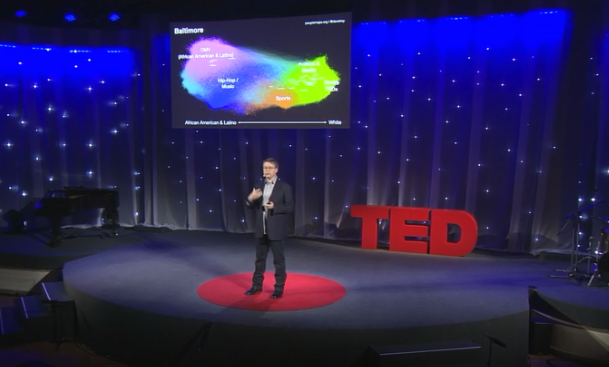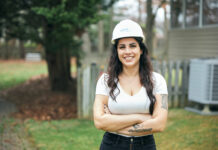You may have seen our interview with techie Dave Troy in the July/August issue of Baltimore STYLE. There, he chatted about the impact and future of technology, but when we talked IRL, we covered so much more. Here, see his thoughts on his other passion: cities, especially Baltimore — then check out his TED talk here.
How do you think Baltimore could benefit from technology?
After the earthquake in Nepal in 2015, there was a lot of reaction from the world and effort to do whatever we could to make things better. One of the things that happened there was that the telephone companies opened up their data to recognize calling patterns—to help understand the situation better, to find accident sites, to find people.
We have a natural tendency to react when there’s a sudden disasters. When there’s a slow-motion disaster, we don’t necessarily have a good sense of what we should do or can do to react to it. Cities like Baltimore are a slow motion disaster. 350 people get shot in a year, and we’re used to it, desensitized to it. But there’s an opportunity to use that data to start to understand what’s wrong with the city from a public health standpoint. It can be used to build understanding and make connections.
It’s pretty possible, for example, to find two sets of people that have no common points of interest. It would be interesting to do an art project or film where you could create those kind of mixings and start dialogue.
What do you mean, no common points of interest?
I’m talking about how people form networks. There’s a term in social science, homophily, which is basically a fancy word for the phrase “birds of a feather flock together.” Cliques happen naturally, but it’s on a larger scale with the concept of a city. People talk about “Smalltimore” or Baltimore being a “city of neighborhoods,” but what that really means is that the cliques people end up moving around in are really small. There are 600,000 people in the city, but it’s more like 30 neighborhoods of 20,000 people. We’re moving and working with these very confined circles.
Where do you see Baltimore in 50 years?
I see multiple different Baltimores based on how things go. In general, there’s a case to be made for optimism – it’s just a question of when. If you look at the phenomenon of the American city as being deeply informed by racism and highway construction and suburban development, you see that these are all aberrant inventions that disrupted how cities have functioned for eons. The average American city’s patterns of development don’t make any sense because they were fundamentally altered by this 50 year intervention.
I think the long term trend looks like cities have always looked: highly dense urban cores where much of economic activity takes place, surrounded by suburbs and more rural areas. At any rate, I think we [Baltimore] will ultimately look like cities have always looked, because I don’t see another intervention like that. That one-two punch of cheap gas and highway construction won’t happen again. Some say autonomous cars will change the course of cities, but I think people don’t really want to spend the time moving.
The consensus from the UN is that most of the world’s population will be living in cities by 2050. In general, I think the tide will rise and lift all boats.
Dave’s Favorite TED Talks
“We Have the Power to Stop Violence in Our Communities”
Erricka Bridgeford
TEDxMidAtlantic
“My Philosophy for a Happy Life”
Sam Berns
TEDxMidAtlantic
P.S. “I think it is the most-viewed TEDx talk ever,” Dave says.
“What if We Ended the Injustice of Bail?”
Robin Steinberg
TED 2018
“This talk is super relevant to Baltimore and I hope we can make bail bonds obsolete here with the idea.”





